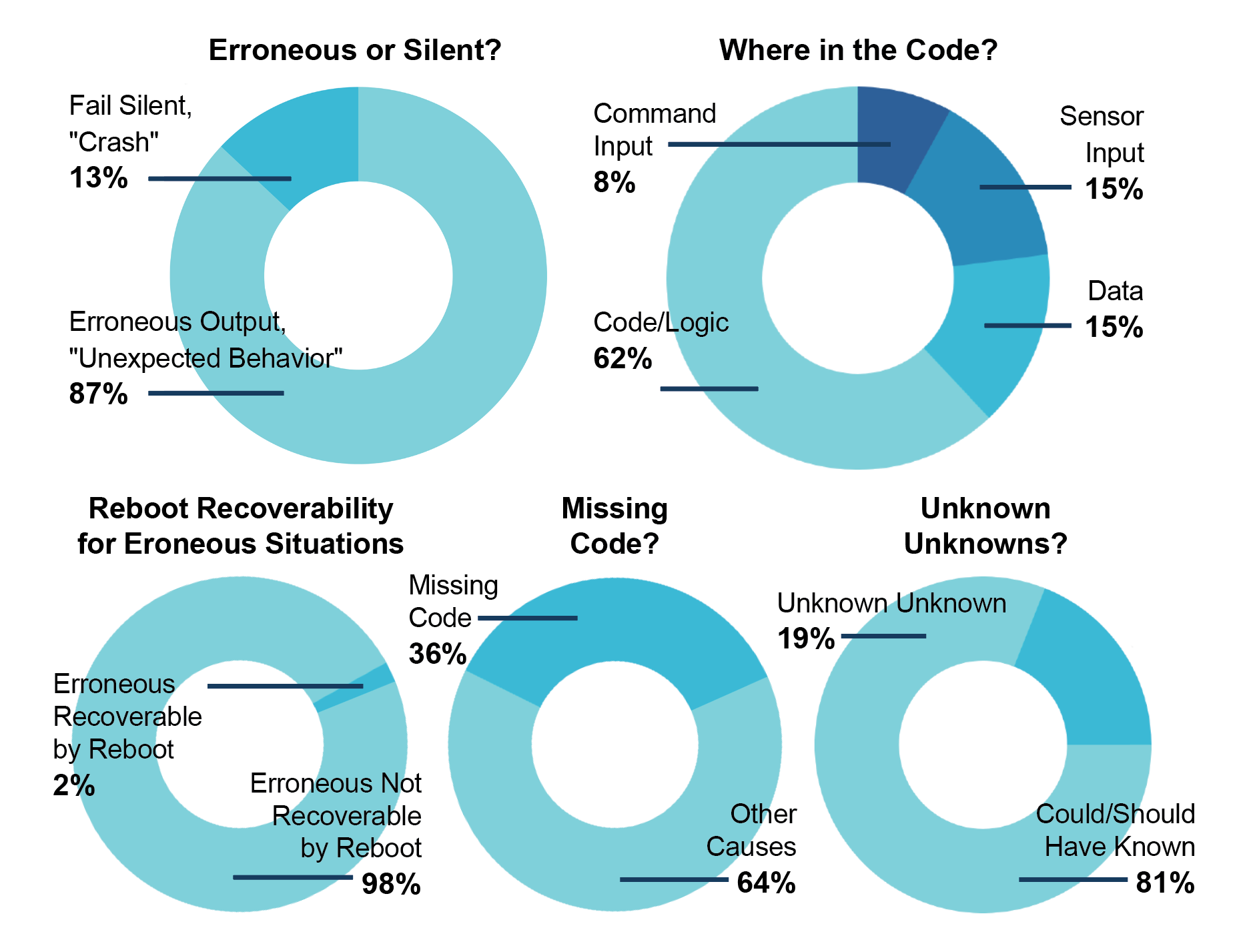The software discipline has broad involvement across each of the NASA Mission Directorates. Some recent discipline focus and development areas are highlighted below, along with a look at the Software Technical Discipline Team's (TDT) approach to evolving discipline best practices toward the future.
Understanding Automation Risk
Software creates automation. Reliance on that automation is increasing the amount of software in NASA programs. This year, the software team examined historical software incidents in aerospace to characterize how, why, and where software or automation is mostly likely to fail. The goal is to better engineer software to minimize the risk of errors, improve software processes, and better architect software for resilience to errors (or improve fault-tolerance should errors occur).

Some key findings shown in the above charts, indicate that software more often does the wrong thing rather than just crash. Rebooting was found to be ineffective when software behaves erroneously. Unexpected behavior was mostly attributed to the code or logic itself, and about half of those instances were the result of missing software-software not present due to unanticipated situations or missing requirements. This may indicate that even fully tested software is exposed to this significant class of error. Data misconfiguration was a sizeable factor that continues to grow with the advent of more modern data-driven systems. A final subjective category assessed was "unknown unknowns"-things that could not have been reasonably anticipated. These accounted for 19% of software incidents studied.






